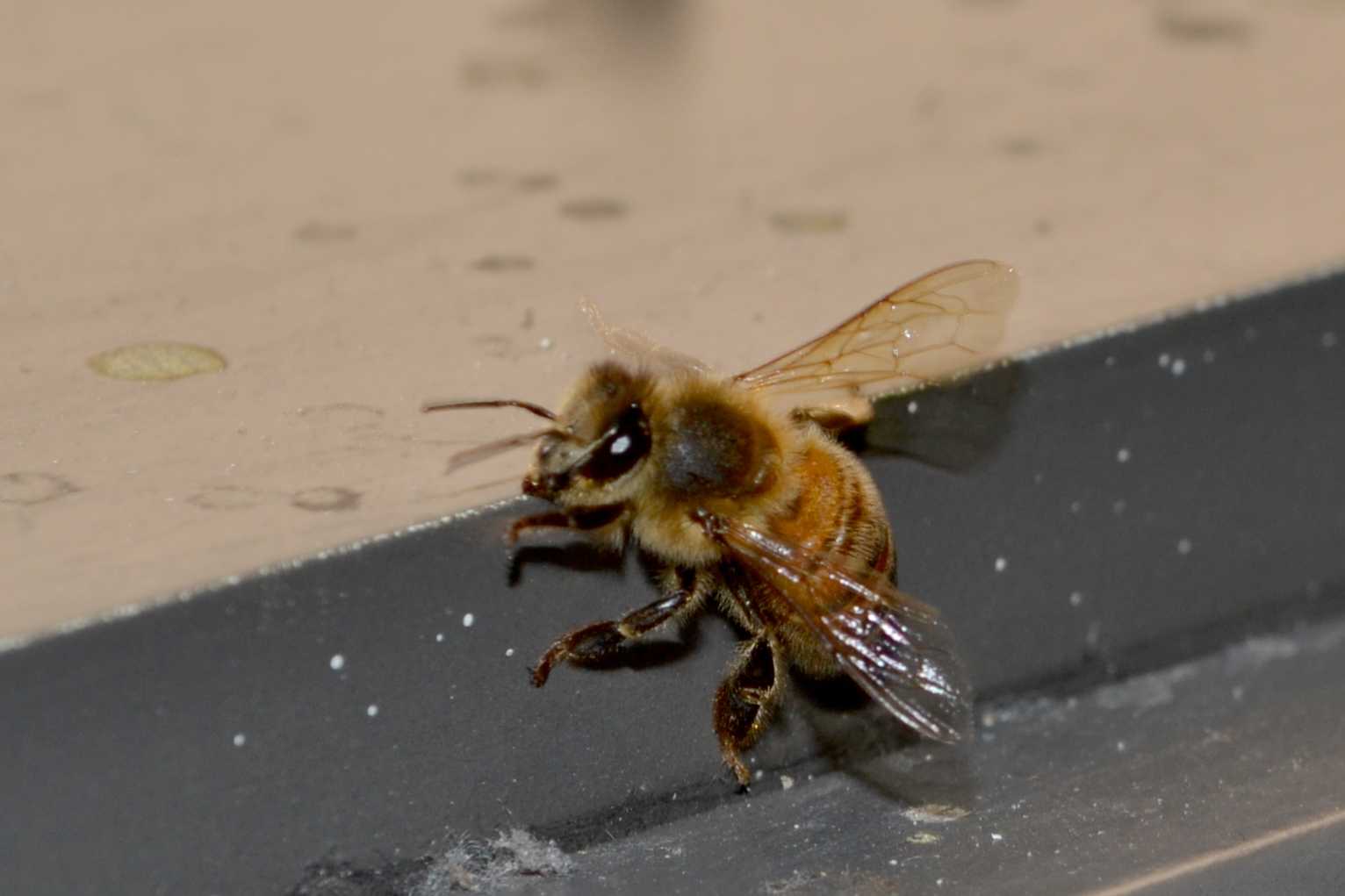The eradication of a bee colony in the Engineering and Computer Science building is part of an ongoing battle to remove increasingly aggressive swarms from the campus.
Grounds and Landscape Services used pesticides last month to eliminate a beehive, located on the fifth floor of the stairwell, yet a few bees still cling to life.
“They have come back [and] re-inhabited a hive that we had there a couple years ago,” said Brian McKinnon, the manager of the Grounds and Landscaping Services, which handles campus pest control.
McKinnon said that the beehives their department removes appear to be Africanized honeybees.
Africanized bees, known more commonly as “killer bees,” are more aggressive and harder to eliminate than European honeybees, McKinnon said.
“Africanized bees are very territorial and will go to great lengths to protect their area,” McKinnon said. “They also pick very unusual spots to colonize, which will be in building walls… irrigation boxes and electrical panels.”
Computer science senior Ripley Otero said that he believes the beehive in the Engineering building moved in during the fall swarming season last semester.
“[My professor] cancelled class because he’s allergic,” Otero said. “But I haven’t heard of anyone getting stung.”
Hives swarm and create new colonies with a new queen bee when part of a hive leaves to form new breeding grounds, Lamar Rush, the pest and control supervisor of the city of Long Beach, said.
“You have a spring and a fall [swarming] season,” Rush said. “They’ll start a swarm to find a new place to start a hive.”
The spring swarming season typically lasts from March to the end of June, Rush said.
Rush said that most bee swarms his department handles are a hybrid between the European and African honey bees.
“The only way to really tell what they are is by using a DNA test,” Rush said.
Despite their infamous reputation, Rush said that even the killer bees are not usually a threat to the public.
“If you have a hive that has been around for a while… they become very protective of that hive,” Rush said. “But the swarms that you see are not really aggressive, unless somebody starts to mess around [with them].”
Hives that have been around for two years or more are considered to be old hives, Rush said.
Nelson Kerr, the manager of the bureau of environmental health in the City of Long Beach, said that his department gets 400-500 calls from the public each year regarding newly formed beehives.
“We don’t have to eliminate bees every time we see them,” Kerr said. “Bees are just a natural part of the environment.”
Bees serve a vital role in pollinating California’s agriculture and relocating the hives to beekeepers for that purpose is an alternative to eliminating them, Kerr said.
However, with the Africanized bees inbreeding more, McKinnon said it makes removing much more difficult and dangerous.
“Some of the bee keepers have not been willing to take them,” McKinnon said. “It seems like a real shame to actually kill them.”




